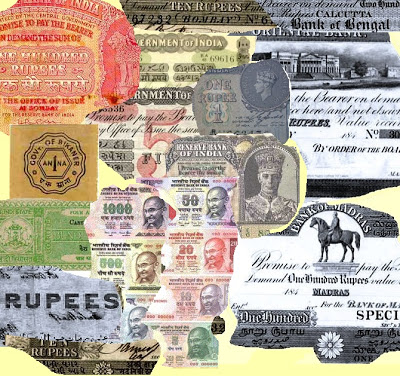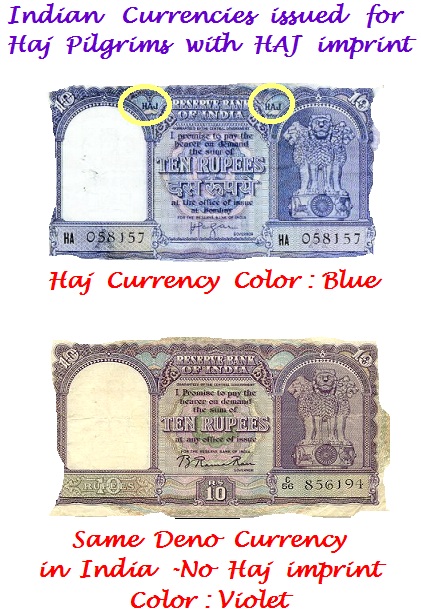
Origin and growth of Bank Notes and Currencies -11
Origin and growth of
Bank Notes and Currencies – 11
(Written by N.R. Jayaraman)

A Banknote or Currency is generally considered as a type of negotiable instrument known as a promissory note and is issued by an authorised bank of a country. The amount indicated in the same are payable to the bearer on demand as every Currency is incorporated with promising clause assuring to pay the specific sum indicated in each Currency. For this purpose each Currency also carry the signature of the authorised person on the same Currencies. This is the general scenario.
The excess Currencies in circulation in the Gulf Countries were therefore a cause of concern to the Gulf authorities and therefore the excess Currencies were sent back to India officially and exchanged back for pounds sterling. This illegal importation of the Gold and exchange of Currencies for pounds sterling brought down the Reserve Bank held sterling held in reserve against the Gulf Rupees. Therefore the Indian government, in consultation with the governments in the Persian Gulf and the Bank of England, addressed the problem by introducing special Currencies Called ‘External Rupees or Gulf Rupees’ for circulation in the Persian Gulf by passing special ordinance in both the houses of the Parliament in India.
In addition to the Gulf Currencies, from the year 1959, the Government of India also arranged for the special issue and distribution of the Currencies to ease the problem of Haj Pilgrims. The Haj Currencies were issued to pilgrims proceeding on Haj Pilgrimage to Saudi Arabia. Earlier it has been the practice to permit Haj pilgrims to take the quota of currency allowed to them in the form of Indian Currencies. Since the Currencies were also forged and used for illegal transactions, the Haj printed Currencies with different Color scheme was introduced. The Haj imprinted Currencies were not legal tender in Saudi Arabia, but facilitated Pilgrims to spend money for their travel purpose as they were valid exchangeable Currencies against local Currencies. The Indian Currencies with ‘Haj’ Imprint on them carried by the Pilgrims could be exchanged on par with local Currencies anywhere in Saudi Arabia which in turn were collected by the Banks and sent back to India for conversion into foreign exchange. Therefore for Pilgrims from India, the foreign exchange Currency was Indian Rupee imprinted with Haj. Certain other features were also added in them.

The Haj Currencies were different in colour compared to the Currencies issued to the Gulf Countries for their internal use and also the similar value Currencies used in India. The Currencies had the word ‘Haj’ printed on them. They are payable ‘at the office of Issue at Bombay’ and could be converted into Indian rupees or into pounds sterling under arrangements in place with the Saudi Arabian banks.

Rs 10/- deno ‘Haj’ Currency was printed in Blue color while the same Currency in India was Violet in color. The Currency issued for internal regular use in Gulf were Red in color.
Rs 100/- deno ‘Haj’ Currency was printed in Red color while the same Currency in India was Purple in color. The Currency issued for internal regular use in Gulf were Green in color.
On top of the Currency, the word ‘Haj’ was printed at each end of the sentence ‘The Reserve Bank of India’
The Serial Numbers on all ‘Haj’ notes began with Prefix ‘HA’.
The Kuwait Govt withdrew use of Indian Currency w.e.f. 1961 and Bahrain withdrew w.e.f. 1965. Thereafter RBI withdrew the said facility extended to the Persian Gulf Countries.














Recent Comments